Brr! It’s cold outside and our petits choux are discovering the various articles of clothing they need to keep warm during the winter. I introduced many of these items in the Clothing vocabulary in French – autumn/fall blog post, but since repetition is key for our little ones, using the French terms as they get ready each morning will help them remember and repeat the new words they are learning.
Related: Clothing vocabulary in French: spring
Related: French summer vocabulary: clothing and seasonal items
Les vêtements d’hiver – winter clothing
Disclosure: Please note that I have included Amazon affiliate links. If you click through and make a purchase, I will earn a commission (at no extra cost to you).
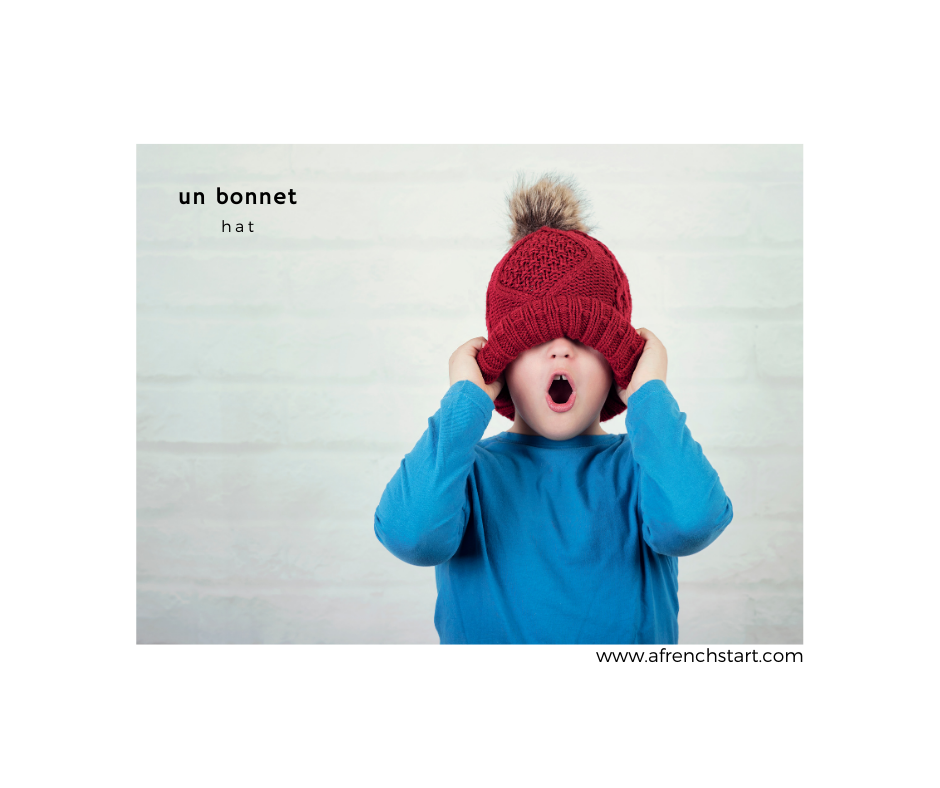
Hat – un chapeau
The most common winter hat is the beanie or un bonnet, which keeps their head nice and toasty.
In Canada, the term “tuque” is commonly used.
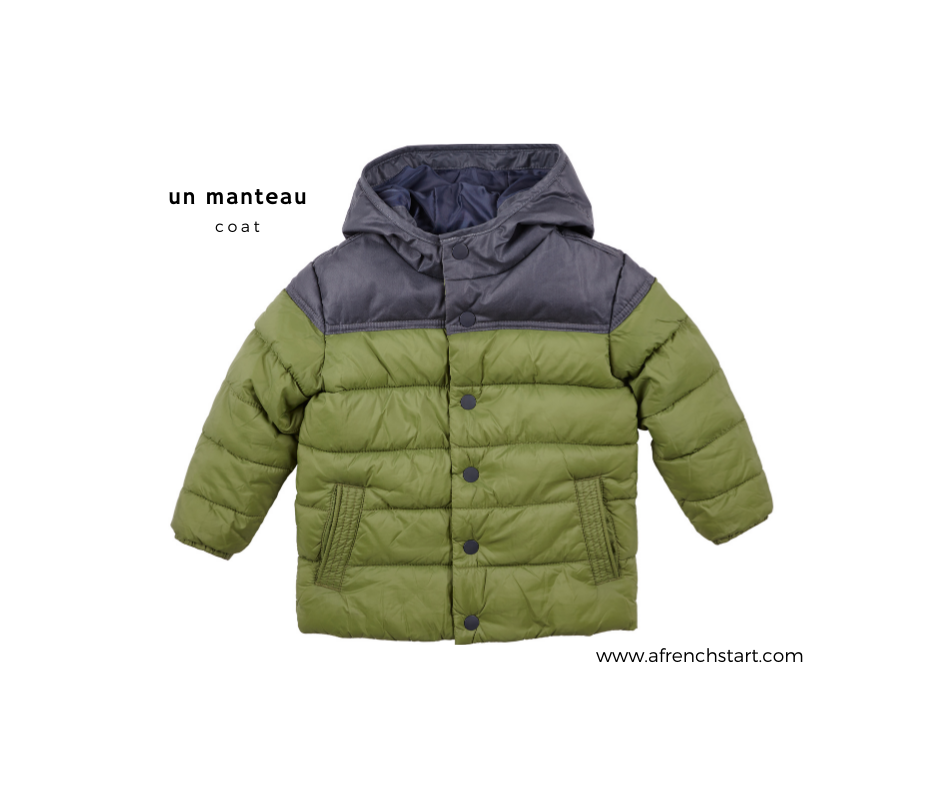
Coat – un manteau
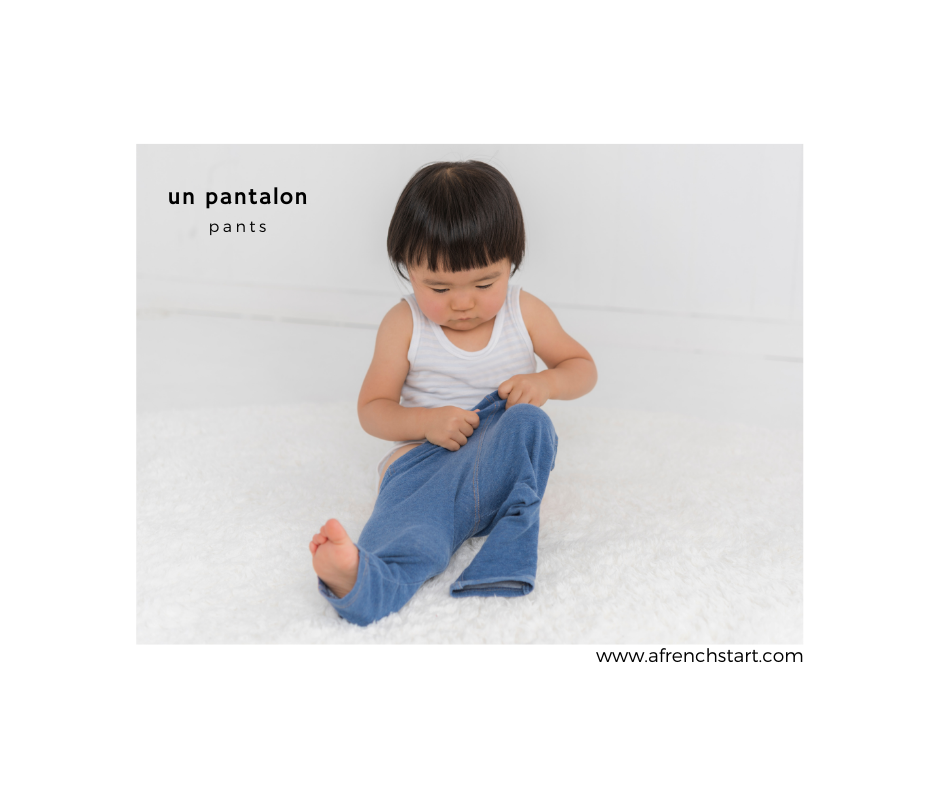
Pants – un pantalon
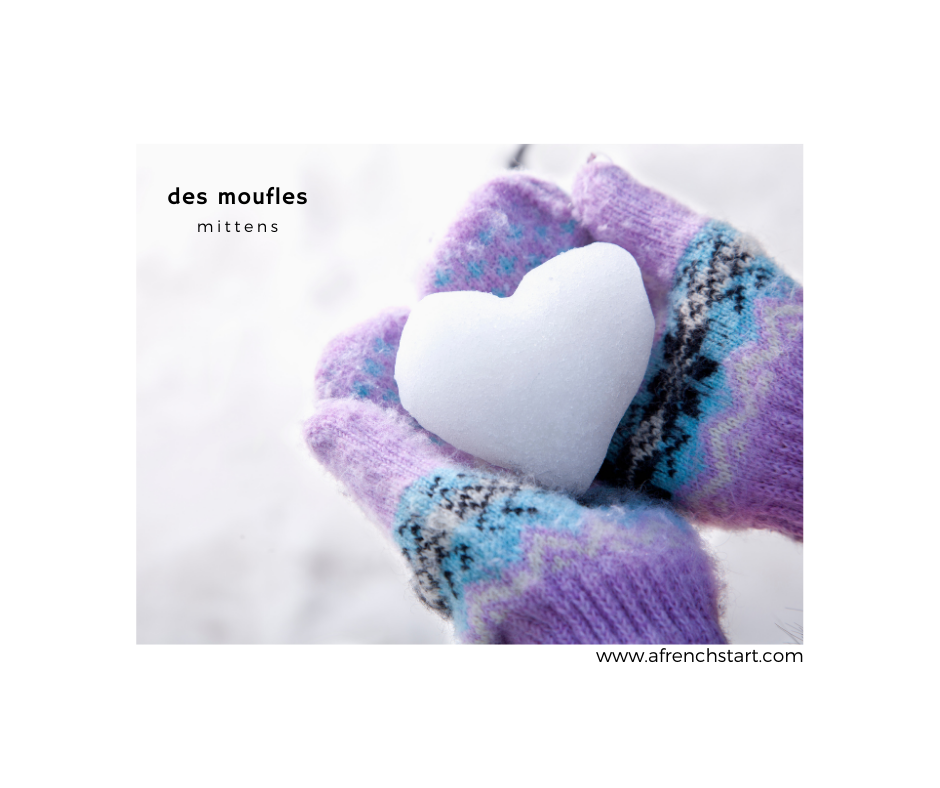
mittens – des moufles (feminine)
What’s the difference between moufles, mitaines, and gants?
Gants (masculine) refer to gloves, so each finger is covered separately.
In France, moufles refer to mittens, so while the thumb is separated, the rest of the fingers are together. Mitaines (feminine) refer to gloves that leave the top parts of the fingers bare.
In Quebec, the term mitaines is used to mean mittens.
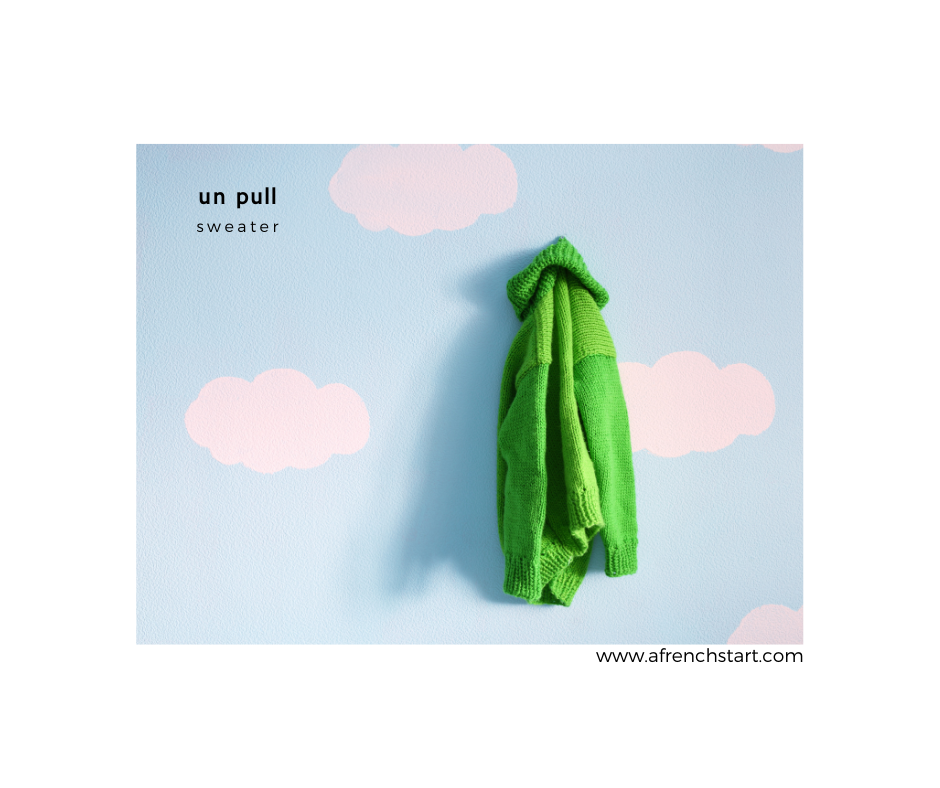
sweater – un pull
What’s the difference between pull and chandail?
They both mean sweater. Chandail is more commonly used in Canada.
Pull (from the English word “pullover”) is more frequently used in other francophone areas.
You may also hear the word tricot, which refers to knitted sweaters.
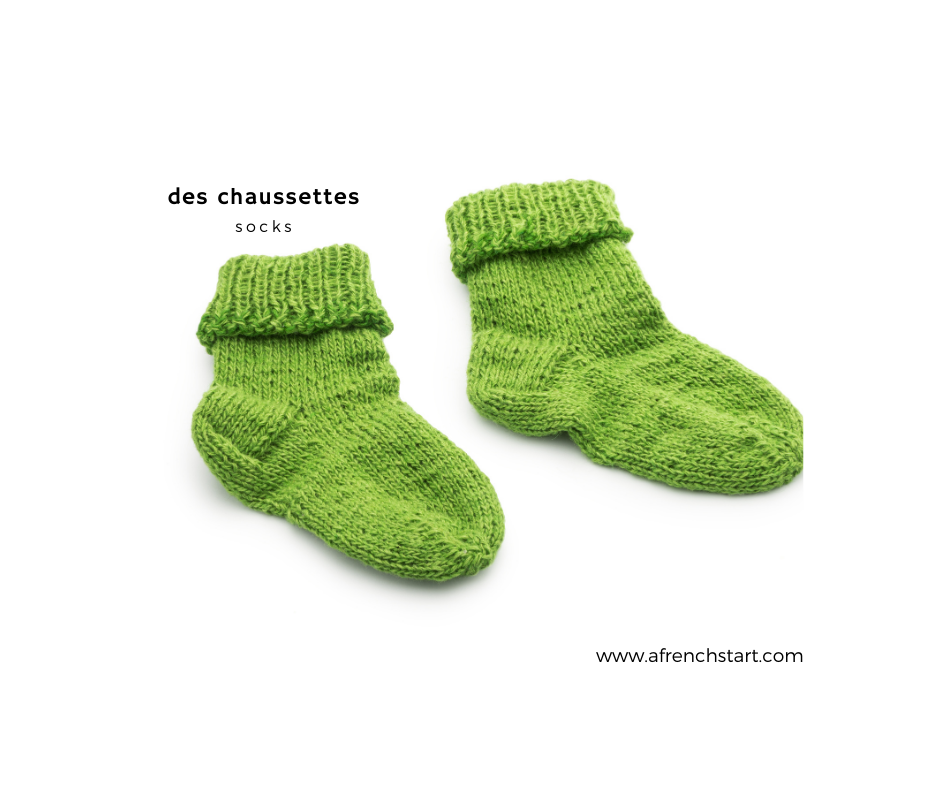
socks – des chaussettes
Note that in Québec, the word bas refers to socks, but it means stockings in other francophone countries.
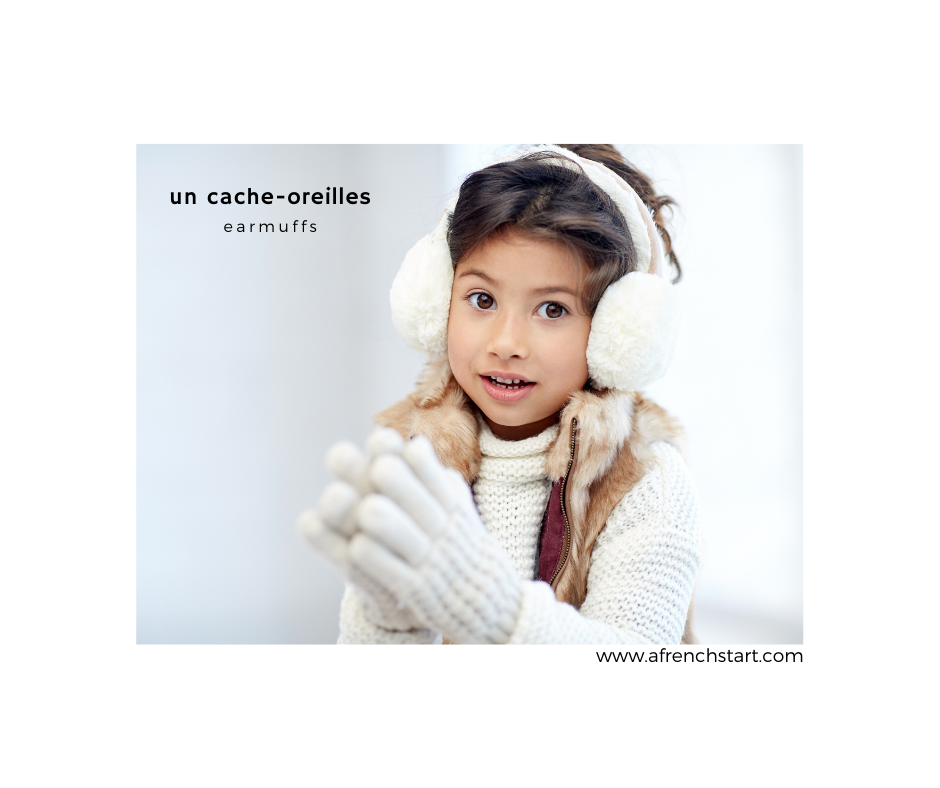
earmuffs – un cache-oreilles
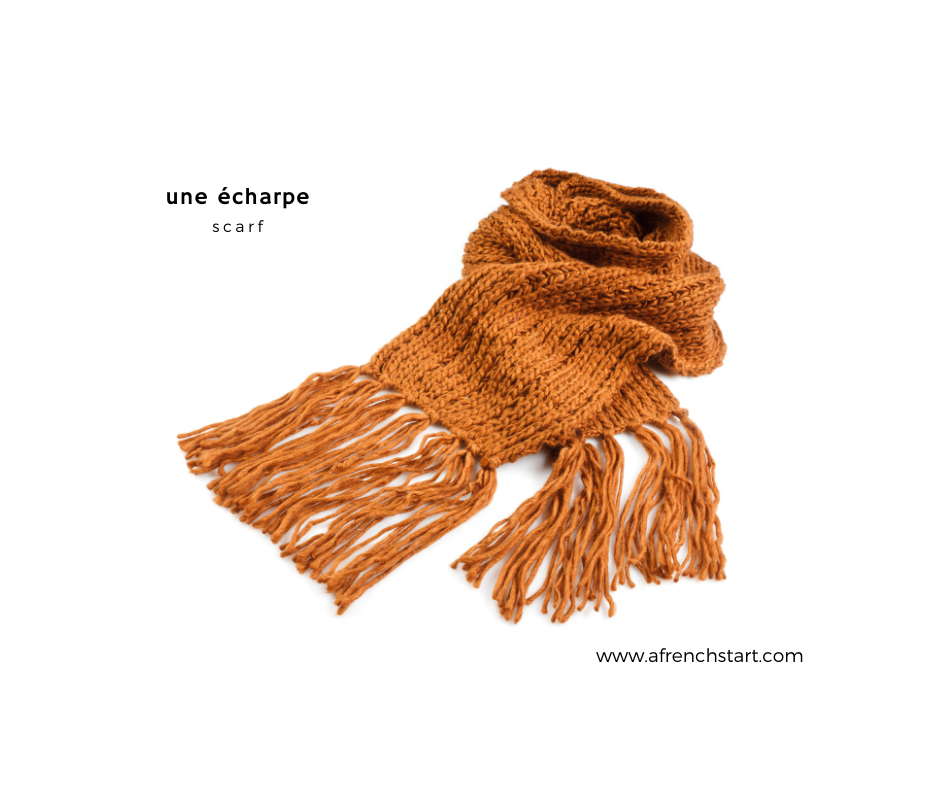
scarf – une écharpe
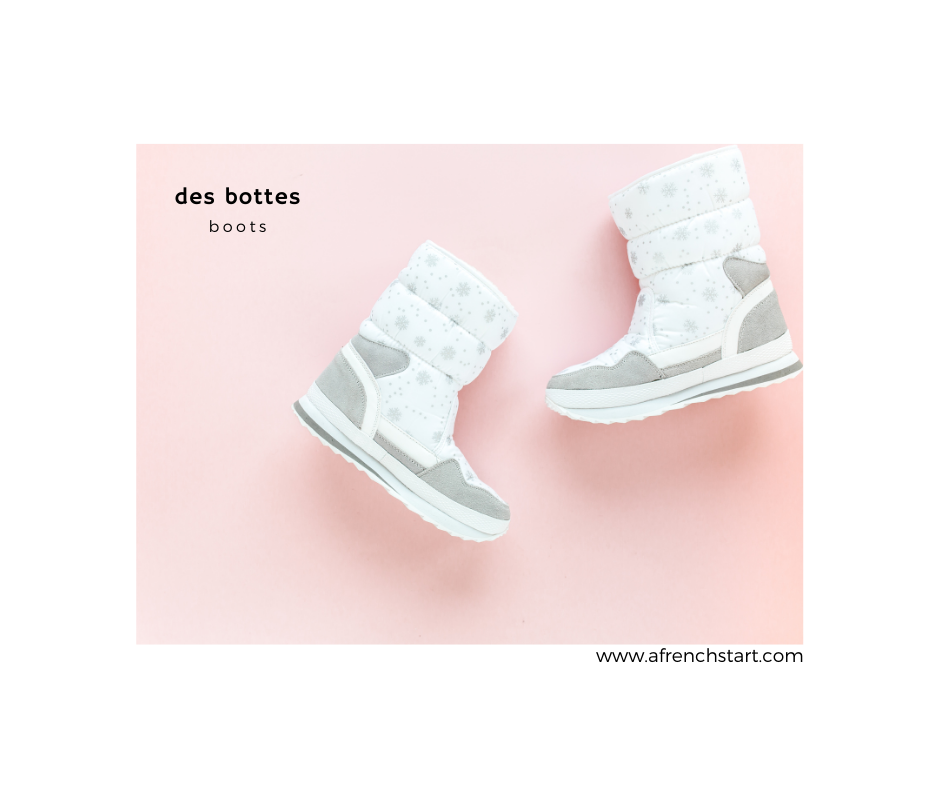
Boots – des bottes
Verbs for getting dressed/undressed in French
Here are some verbs that will come in handy when your kids are getting dressed/undressed:
To get dressed – s’habiller
To get undressed – se déshabiller
To put on – mettre
To wear – porter
To take off – enlever, retirer
Clothing vocabulary in French: video
Here’s a fun video that you can watch with your kids to practice their listening skills:
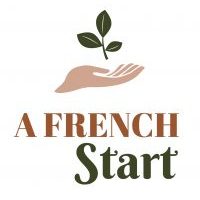
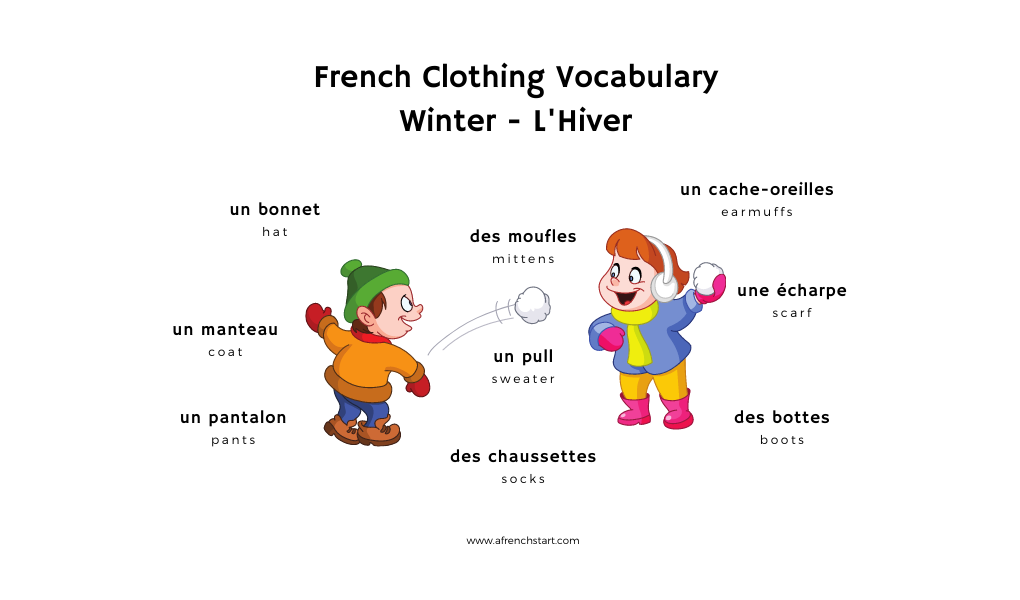
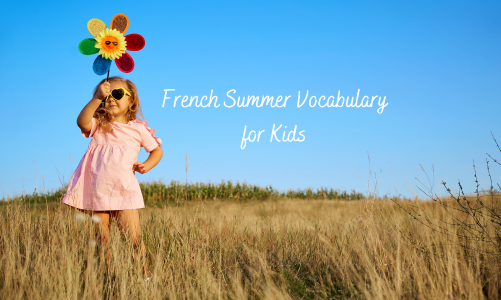
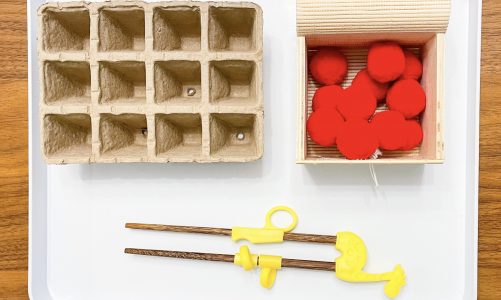
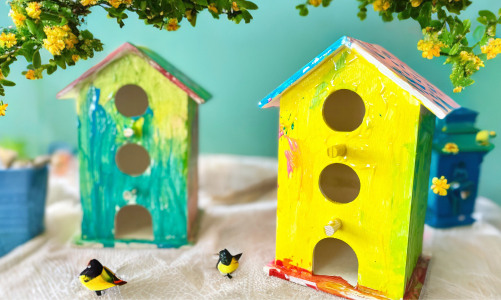
4 thoughts on “Clothing vocabulary in French: winter”